
Discovery of the M31 [OIII] emission arc
Recently, a major discovery by an international team of amateur astronomers and scientists has become a huge online hit, and this new discovery is just located in one of the
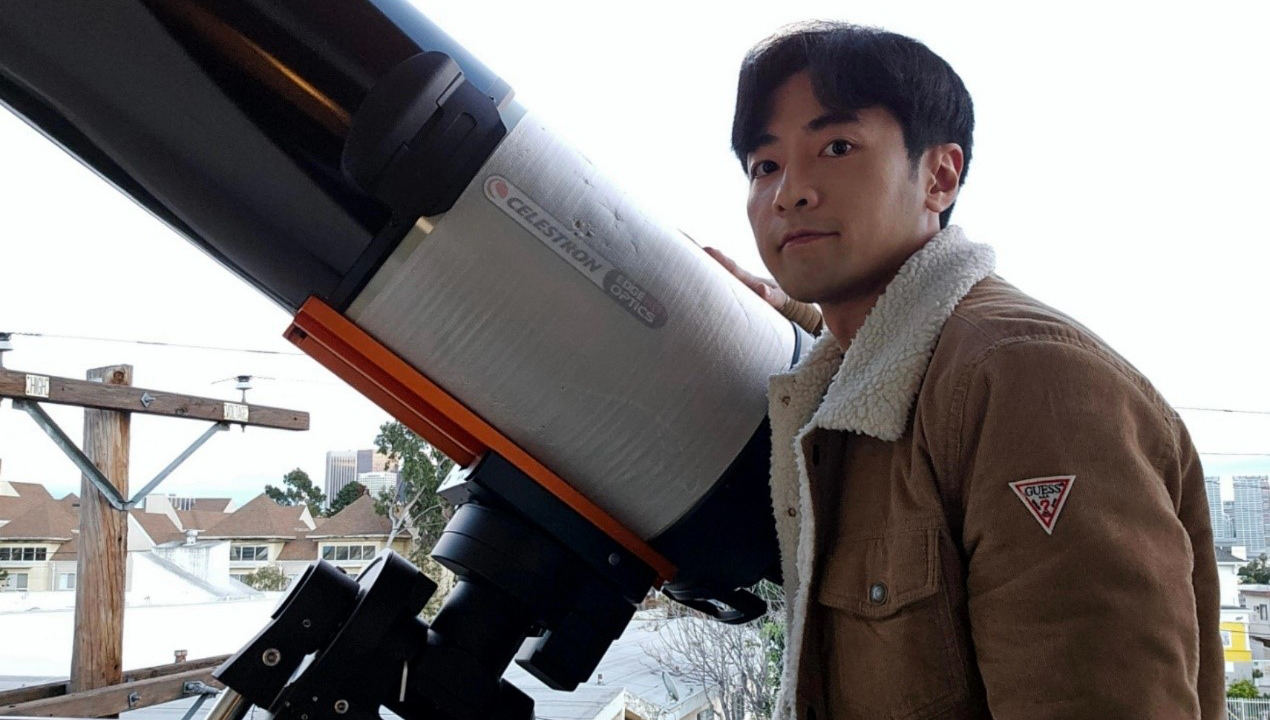
Hello John, thanks for accepting our interview invitation. Congratulations on winning the ASIWEEK competition in week #25/2024!
Thank you! I’m very honored to have my astrophotography featured for #ASIWEEK. My name is John Park, and I’m working as a software engineer. I’m 26 years old, and I live near downtown Los Angeles.
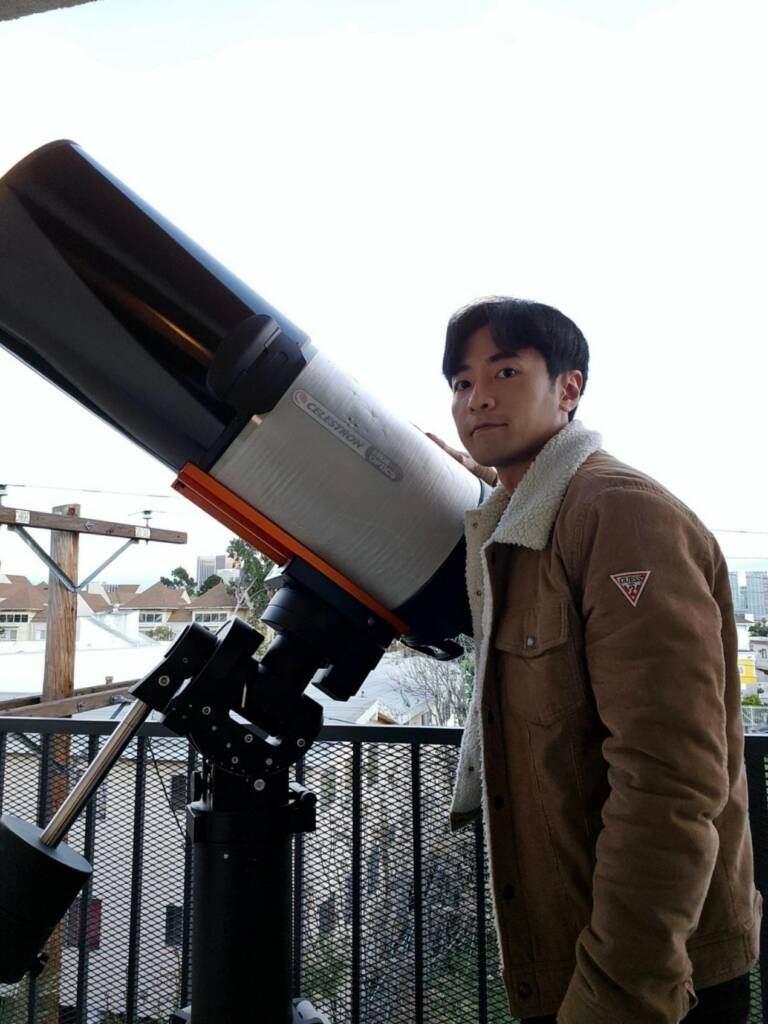
My very first opportunity was when I received a 6-inch reflector telescope with a cheap planetary CCD camera for my 12th birthday present. I started out taking pictures of the moon’s surface and planets with a small hand-tracked mount. I took a break for some time due to personal reasons, but I resumed my journey of astrophotography around 2022 to chase my youngest desires.

I’ve been into DSO astrophotography for about 2 years. Astrophotography allows you to capture the beauty of the universe with your own gear which I find very fascinating. After patiently waiting and acquiring subs for long-exposure photos, it’s highly rewarding to produce images with details that our eyes cannot see.

I initially started out taking long-exposure astrophotos from my Bortle 9+ balcony. I was able to capture some nebula targets, but I found it very hard for various reasons. I was only able to shoot the eastern sky from the apartment where I live, and the sky was too light-polluted. Starting last year, I joined a local Astro community that had access to a bortle 3.5~4 dark sky that’s only about 70 miles away from me. Shooting from a dark sky surprised me because the amount of detail and noise was immensely better than shooting from where I live. Even with 3 ~ 4 hours of exposure, the amount of detail obtained was astounding. Now, I stopped shooting from my balcony and shoot only from dark sites, and I believe it’s worth the drive.
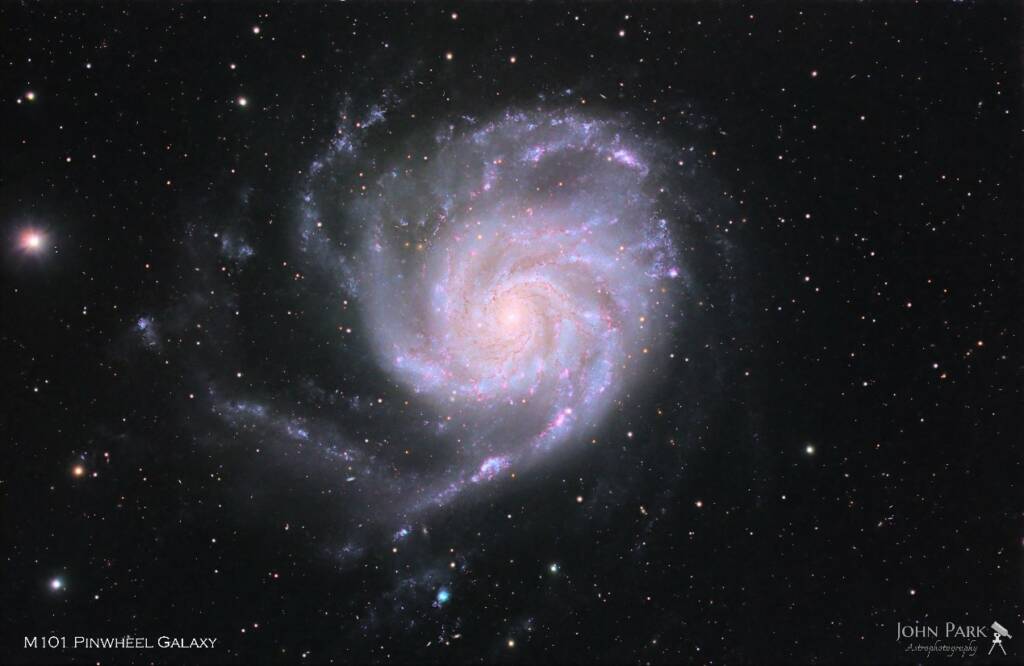
Messier 106 is a spiral galaxy located in the constellation of Canes Venatici. It’s about 24 million light years away from Earth. The galaxy appears to have two extra red arms which are mainly composed of hot gas rather than stars. These are believed to be caused by the massive black hole of the galaxy’s center.
After looking at the Hubble image of this target, I wanted to capture this red gas along with the nebulas within the galaxy. Initially, I shot an LRGB of the target to check how much overall details I was able to get with my telescope. I’ve also tried getting 300s subs of HAlpha to see how it will turn out, but I was disappointed because the stacked frames will show noise patterns although dithering 3 pixels every frame. To avoid this, I revised to shoot 600s HAlpha subs instead.
Couldn’t find a clear moonless night, so I shot the rest of the subs during 50~60% moon for 2 days, focusing on HAlpha for the later night. Although the moon was up, shooting from a dark sky helped. The total acquired time was 24hrs 14’ which was a bit shorter than I’d planned. However, I’m happy to see the amount of Halpha details I was able to obtain.
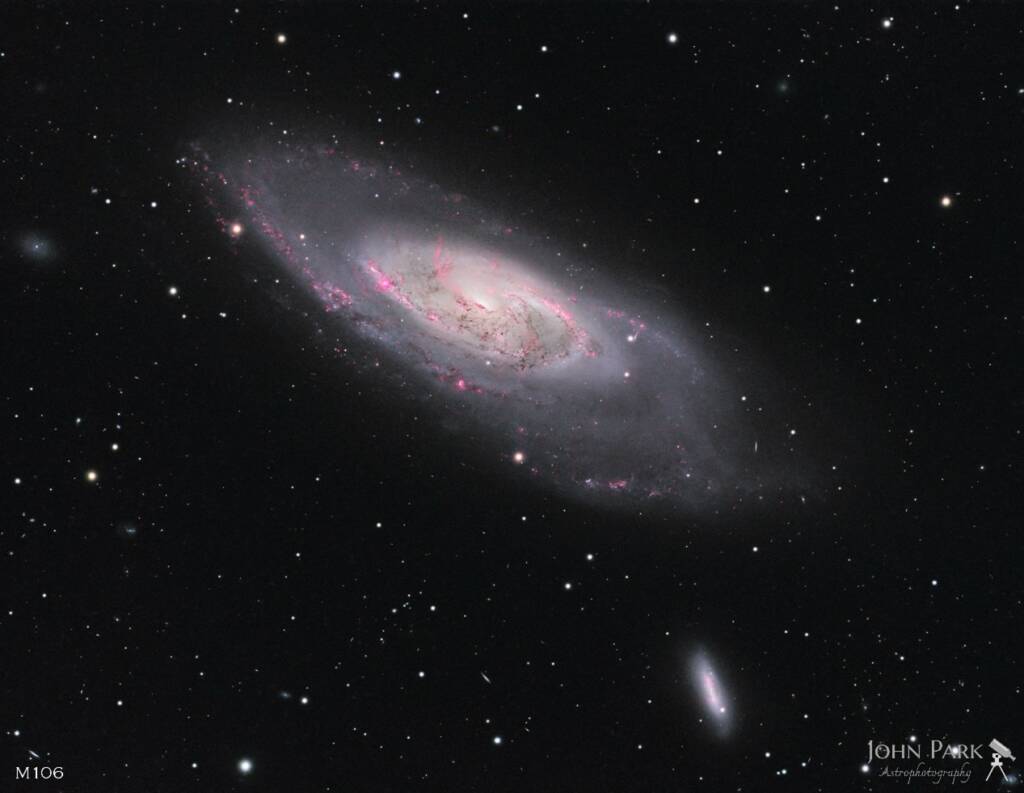
I have 2 imaging setups. My main setup is a C11 EdgeHD F/7 mounted on a CEM70G, and this was the gear used to shoot M106. I still have aperture fever from visual astronomy, but I find C11 to be the maximum-size telescope I can easily transport to a dark site. I use the CEM70 mount because it’s the lightest but solid mount that can handle a C11 with ease. I pair the scope with ZWO asi2600mm-p, 7×2” filter wheel, OAG-L, asi174mm-mini, and EAF. ASIAIR is used to control the system.
My 2nd setup is a lot more portable which is an Esprit 100 mounted on an AM5. I have my second asi2600mm-p paired similarly to my primary setup which is ZWO 36mm EFW/OAG-L/asi174mm-mini/EAF/ASIAIR.
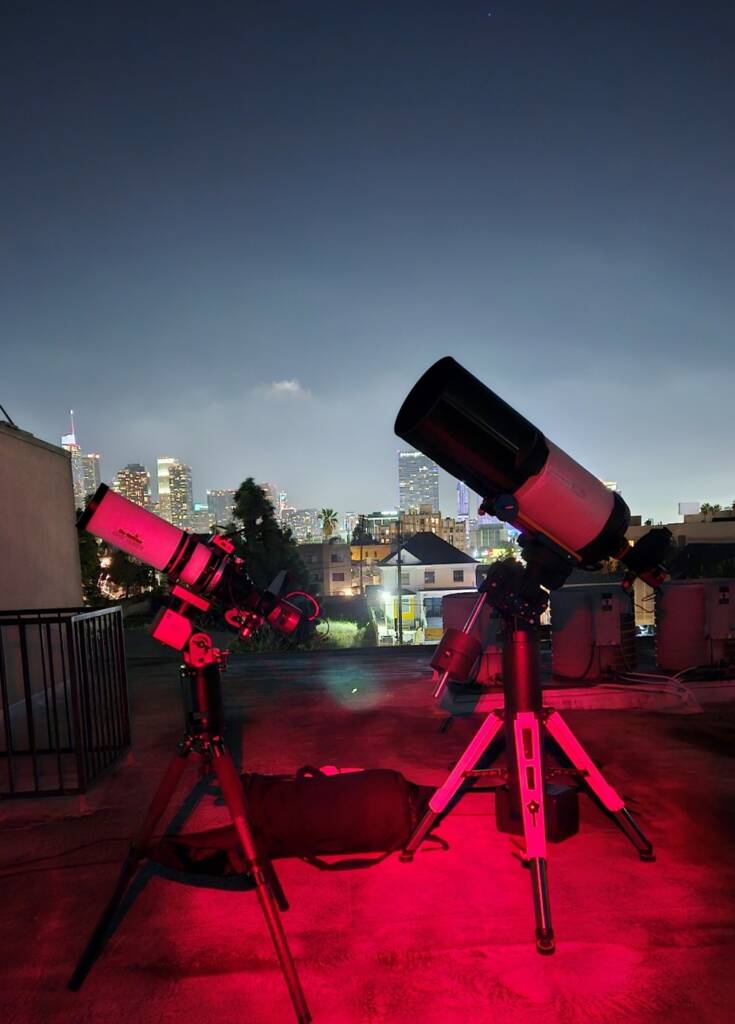
I think the most difficult part of astrophotography is processing the data. There are a lot of variations of details revealed or color balances possible, and many times it will not turn out as you like. There’s always room for improvement, but I think it’s important to be satisfied with the result that was obtained.
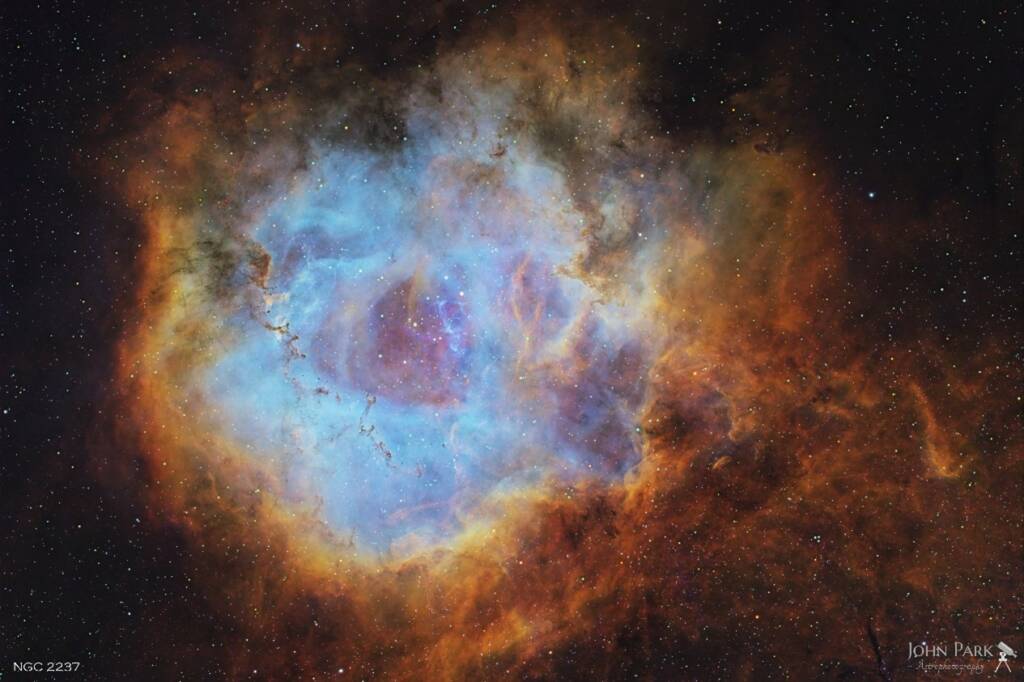
I used to enjoy visual astronomy with a reflector telescope, but now I’m more focused on picking up feint details with astrophotography. I also enjoy learning topics regarding astronomy and physics.
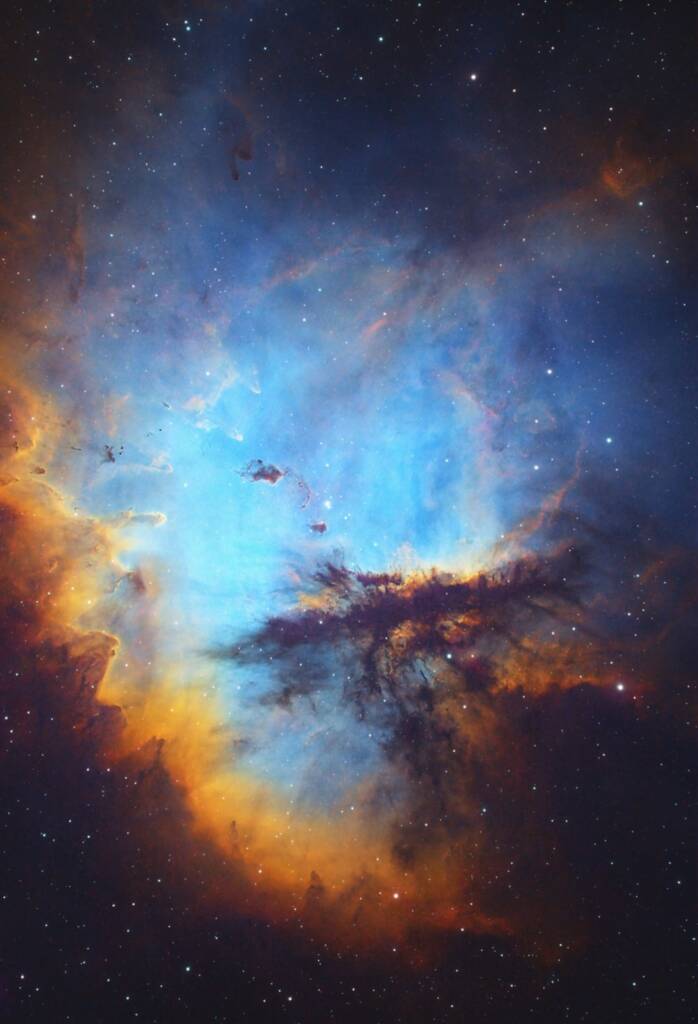
While setting up my gear, I saw some human-looking figure flying in the sky. Might’ve been a balloon, but it looked as if someone had a jetpack on their legs.
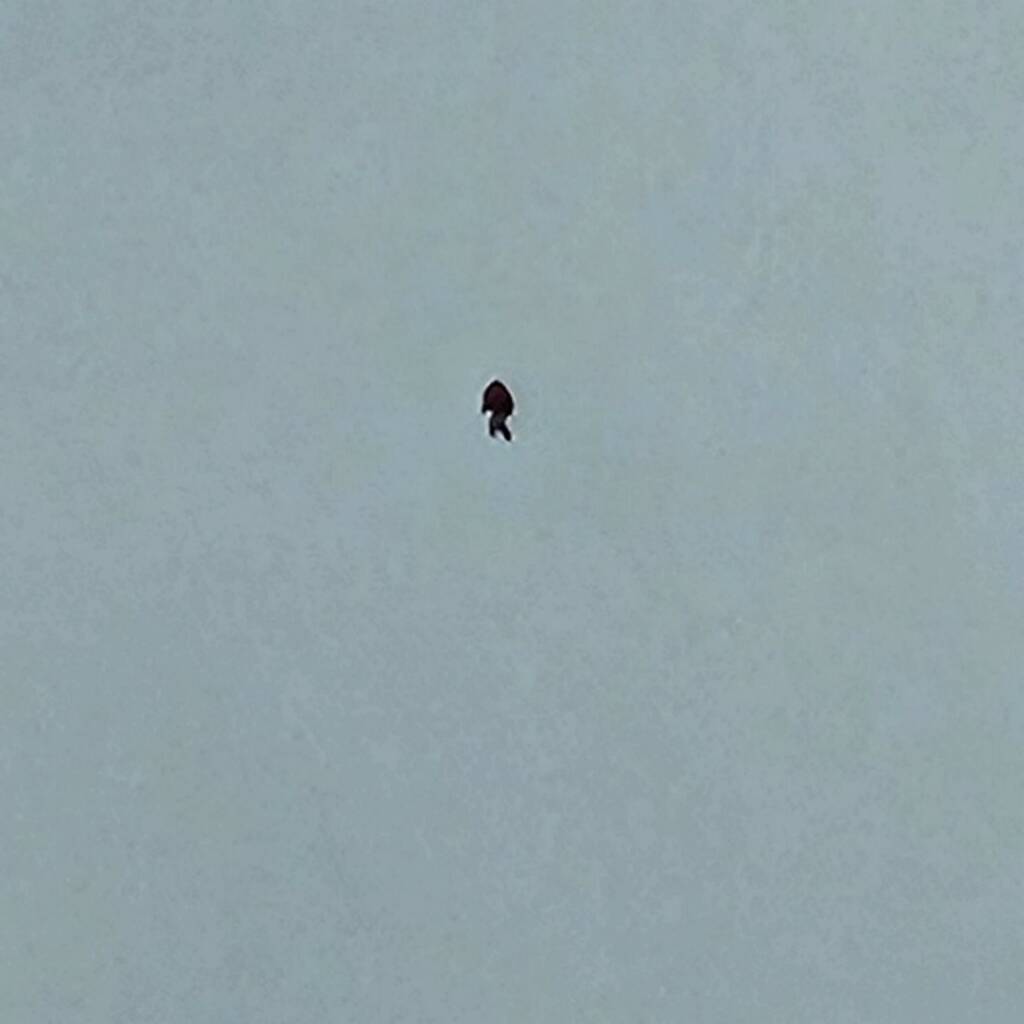
The quality of my astrophotography was greatly upgraded when I switched from a one-shot color camera to a monochrome. There was some learning involved compared to processing OSC photos, but I believe it was worth the change. Data is a lot cleaner and easier to work with.
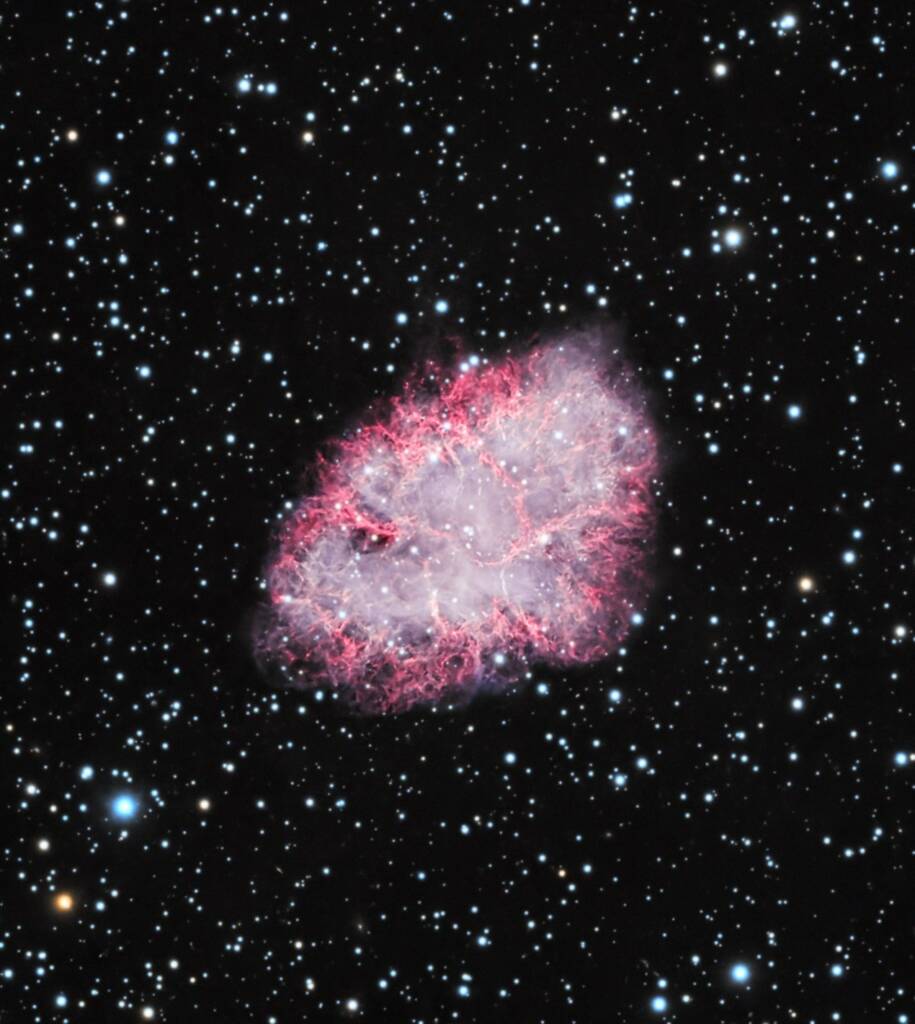
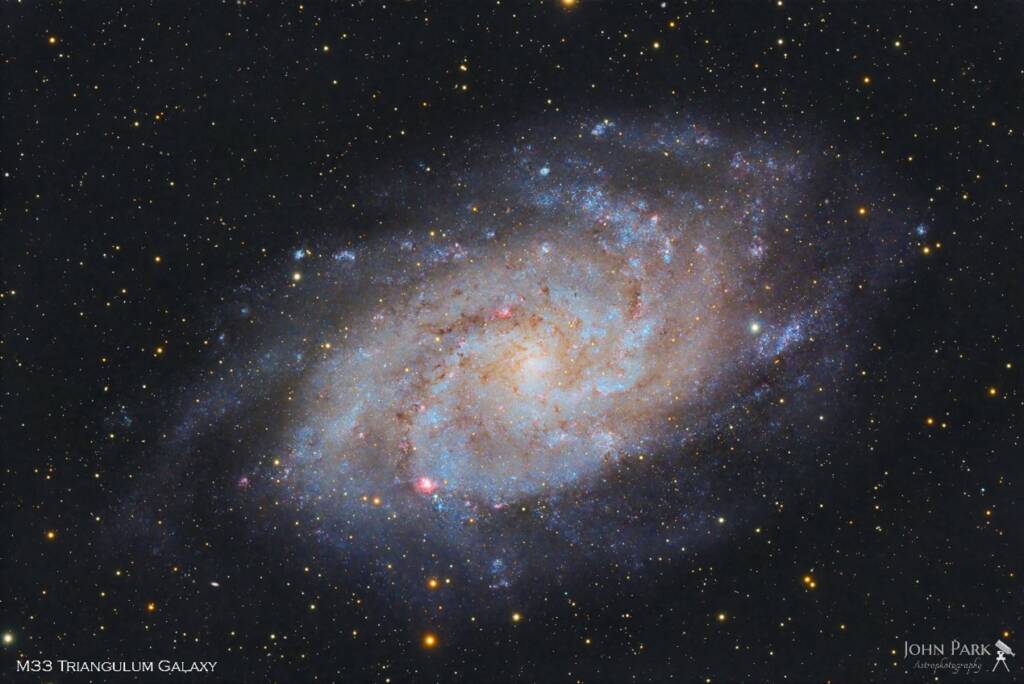
It’s certainly not required to purchase expensive gear just to begin. Most of the deep sky objects are huge but a feint to be seen with the naked eye. Therefore, a small refractor or a DSLR mounted on a star tracking mount is still able to produce marvelous astro images.
Shooting from a Bortle 9+ sky is still possible if you don’t have a dark sky available nearby. Recent software tools have improved to remove gradients and light pollution a lot more effectively than before. So don’t be discouraged and give it a try!
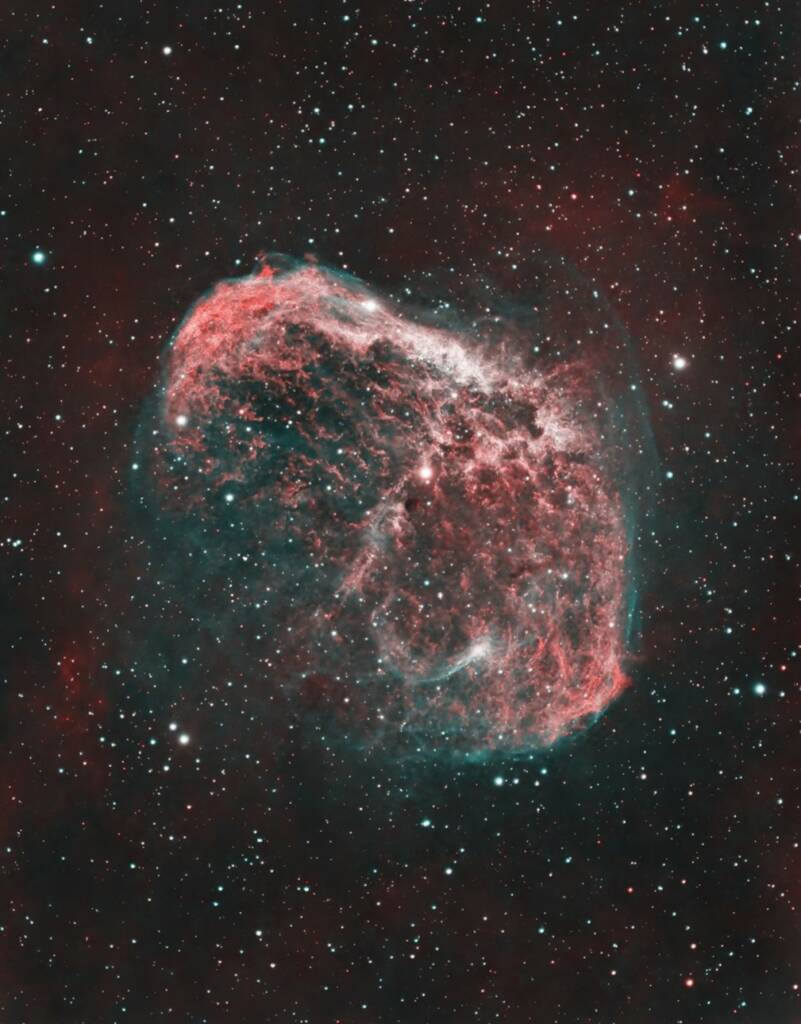
I think having patience is very important with this hobby. There’s a lot of work needed to produce a decent image, but we have our daily work to do. For me, I try to visit the dark site during the weekends if the skies are clear (this is rare these days). If not, I can spend time with my friends or do other hobbies such as making music. The shooting plan may fail due to weather or work schedule changes, but I believe we can always shoot another day if it’s clear (except for the solar eclipse this year haha).
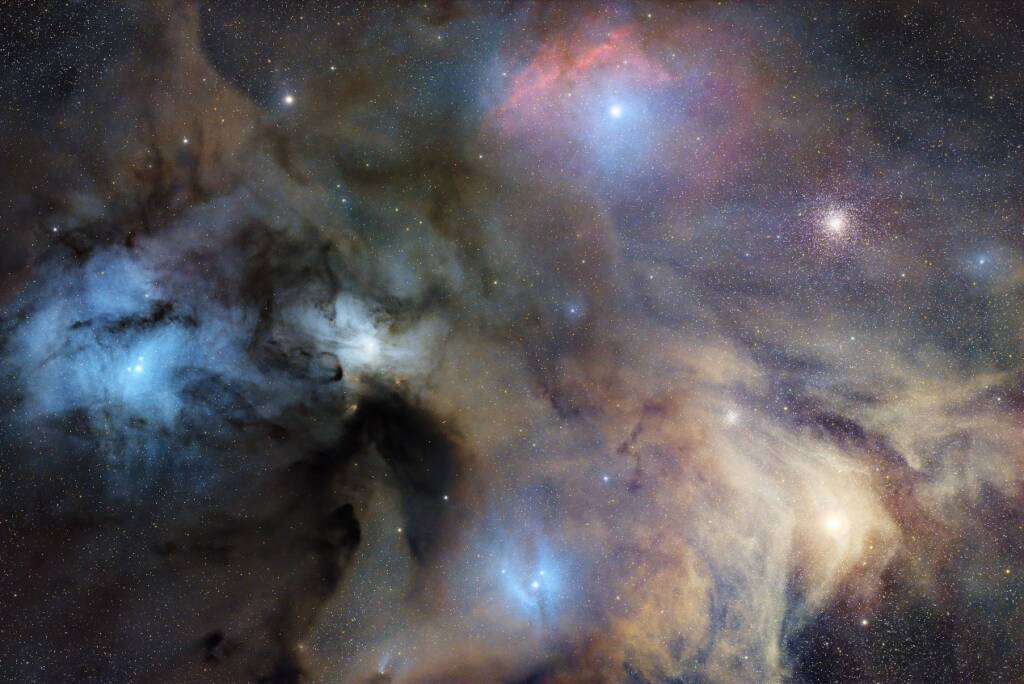
I’ve started using ZWO products about two years ago. I appreciate that ZWO has a whole ecosystem of astrophotography gear which I find no other companies offer. One small suggestion I have for ZWO would be selling the 12V 5A male-to-male cables as a separate product. It’s only included in the ASIAIR package, so it’ll be helpful if sold separately in case the cable breaks.
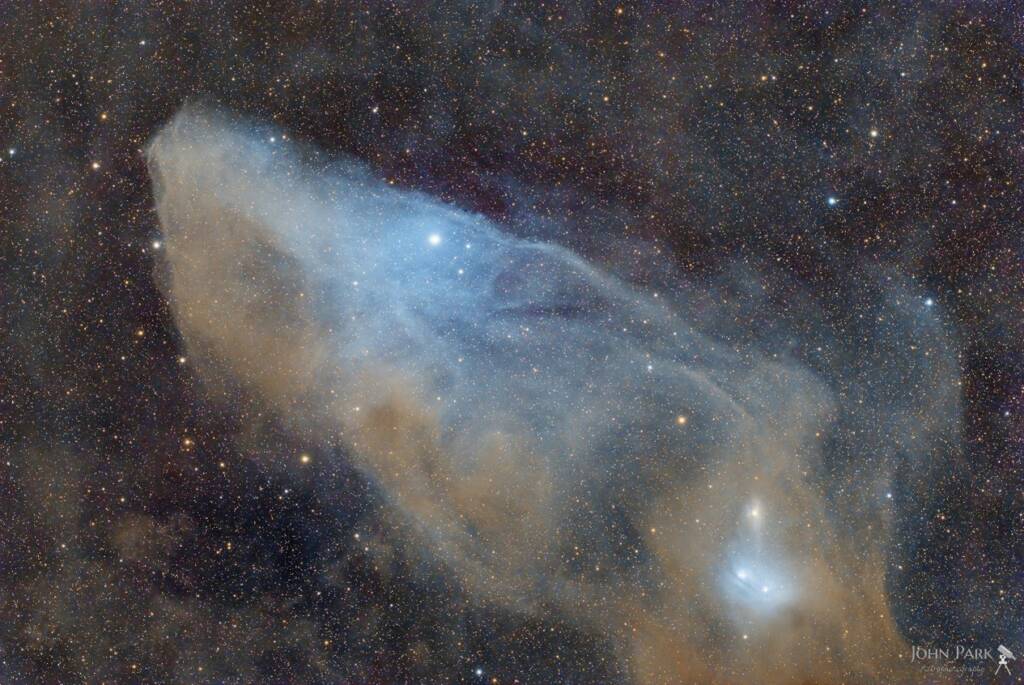

Recently, a major discovery by an international team of amateur astronomers and scientists has become a huge online hit, and this new discovery is just located in one of the
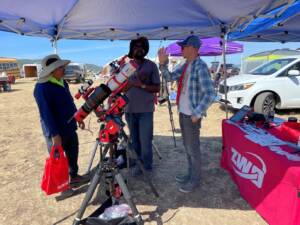
From June 25th to June 29th, under the pristine, dark skies of Northern California, nearly 500 stargazers, astrophotographers, and cosmic dreamers gathered for the Golden State Star Party (GSSP)—a celebration
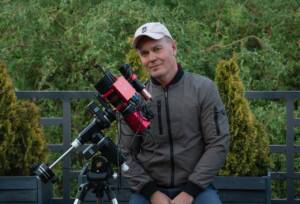
“Ever since I was a kid, I’ve been fascinated by the universe.”“I wouldn’t say it has changed me fundamentally, but it’s definitely become an important part of my life.”That simple
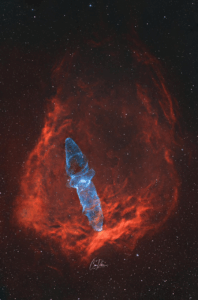
To most people, this might just look like a pretty picture. But to astrophotographer Cem Diken, it’s the result of three years of chasing a nearly invisible ghost in the

I was born in Guadalajara, I’m 38 years old, a musician, communications and electronics engineer, and president of the Guadalajara Astronomical Society A.C. since 2020. First Contact with Astronomy Since
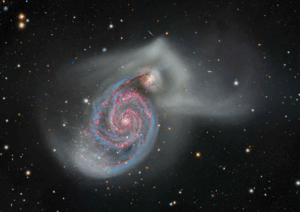
This stunning collaborative project comes from astrophotographers Alex Linde and Thomas Hansson, who joined forces across borders to photograph the Whirlpool Galaxy from Sweden, Poland, and Texas, USA. Thomas traveled across